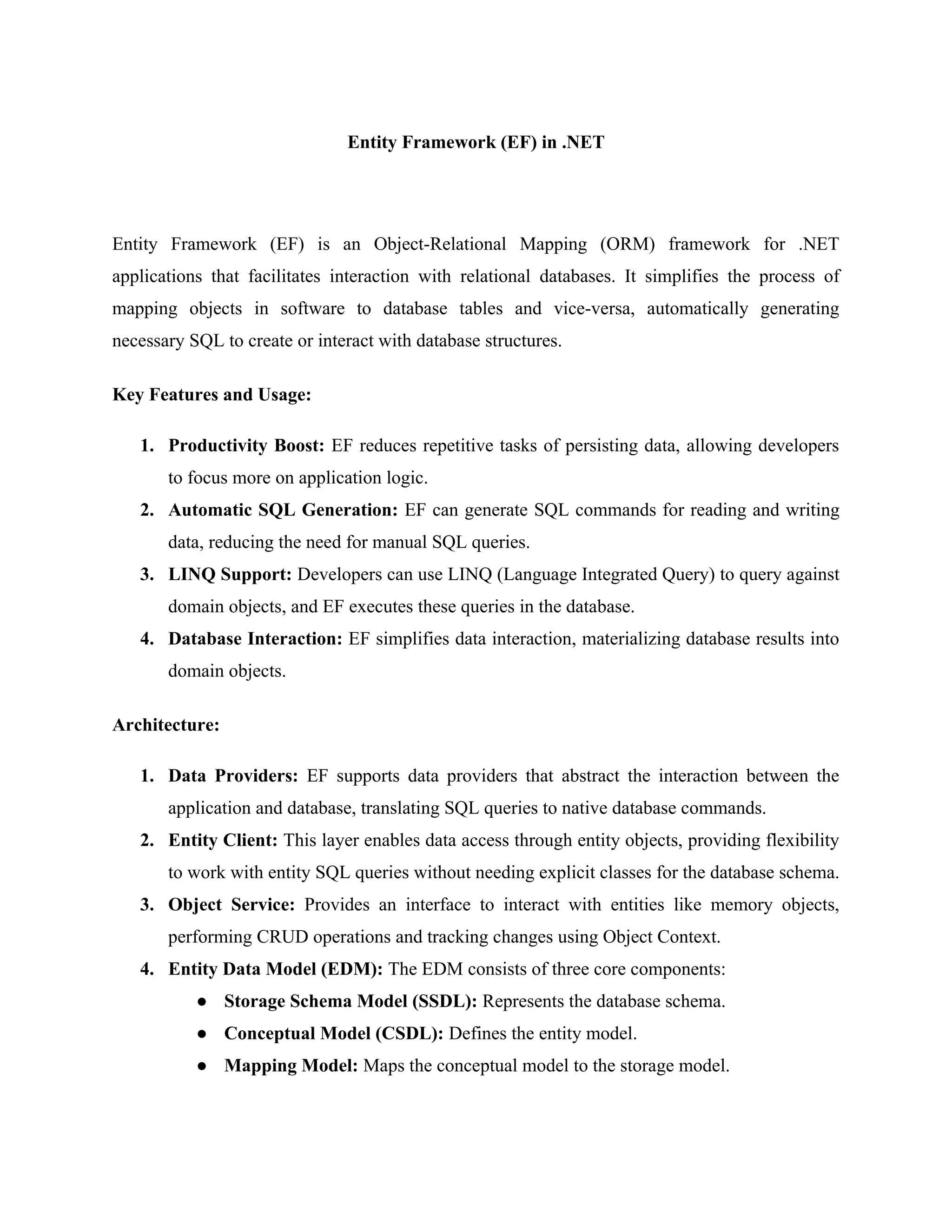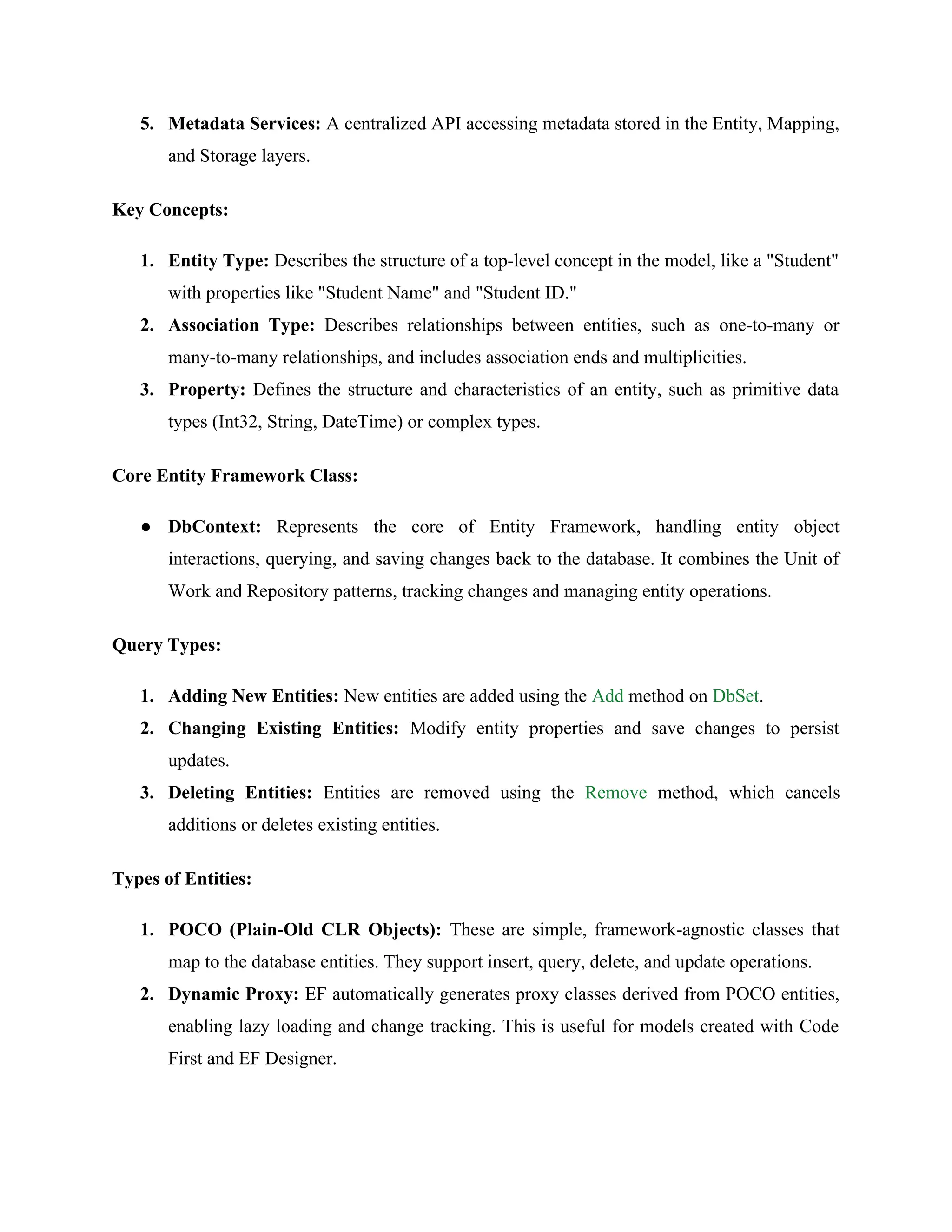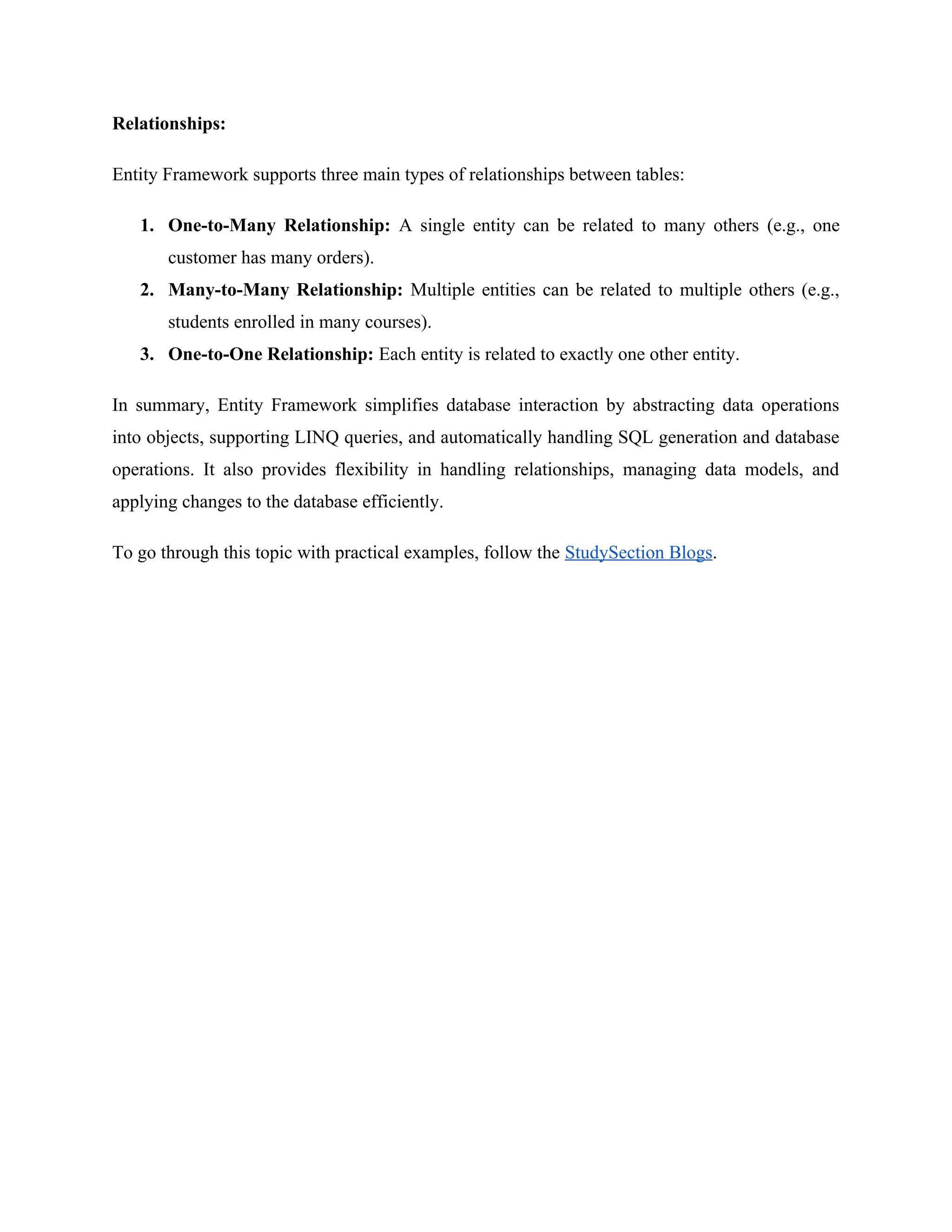Entity Framework (EF) is an ORM framework for .NET applications that simplifies interactions with relational databases by mapping software objects to database tables and generating SQL commands automatically. Key features include productivity boosts with CRUD operations, LINQ support, and various architectural components, such as DbContext for entity management. EF also handles relationships between entities, making database operations more efficient and flexible.


